Some videos of Neivamyrmex opacithorax.
Edited by PurdueEntomology, May 10 2020 - 12:31 PM.

That colony looks more like N. carolinensis. Neivamyrmex nigrescens aren't as shiny and brightly colored.
N. carolinensis:
N. nigrescens:
Edited by Ant_Dude2908, May 5 2020 - 3:46 PM.
My Main Journal | My Neivamyrmex Journal | My Ant Adoption | My YouTube
Join the TennesseeAnts Discord Server! https://discord.gg/JbKwPgs
That colony looks more like N. opacithorax. Neivamyrmex nigrescens aren't as shiny and brightly colored.
N. opacithorax:
500px-Neivamyrmex_opacithorax_(Gary_Alpert).jpg
N. nigrescens:
I took 3 specimens and pointed them then keyed them out in the lab, so I am pretty sure they are nigrescens.
That colony looks more like N. opacithorax. Neivamyrmex nigrescens aren't as shiny and brightly colored.
N. opacithorax:
500px-Neivamyrmex_opacithorax_(Gary_Alpert).jpg
N. nigrescens:
I took 3 specimens and pointed them then keyed them out in the lab, so I am pretty sure they are nigrescens.
Hmm. Must be a different variant than what I get here, then.
My Main Journal | My Neivamyrmex Journal | My Ant Adoption | My YouTube
Join the TennesseeAnts Discord Server! https://discord.gg/JbKwPgs
Higher magnification videos of Neivamyrmex opacithorax.
Edited by PurdueEntomology, May 10 2020 - 12:32 PM.
You might consider N. opacithorax, I agree they do appear to be a bit shiny and the basal margin of the mandible appears to be a bit angulate. However as nice as the images are it is a bit tough to be sure.
I did an estimate of the colony size. I timed the number of ants heading out from bivouac to food. I averaged 97 ants per minute one way. The trail going one way was about 5000 ants in an hour (the time to collect the brood-food given today was 50 minutes for evacuating all of it) . According to literature 1/4-1/3 of a colony will head out to gather food. Given that I may have double counted the same ant and the overall size of the colony in the container in which the gyne is I am roughly estimating the colony size at 15-20K. I had to return to the original collecting site 4 times to gather any left over workers. The colony when found had no brood but the gyne was physogastric. I only found eggs 3 days ago and the gyne was still physogastric, it was the only time after having placed the colony in a container that I had seen, two weeks had passed. I am assuming that she only started laying within the past 3-4 days. I am currently feeding them an average of 6grams of Solenopsis invicta brood and subterranean termites daily. This based on a paper where a colony that had approximately 6000 workers was fed 2grams of termites daily. So at 20k/6k giving 3.3 x 2grams = 6.6grams/day. When the eggs hatch in approximately 12-14 days I will boost up to 8-10grams/day.
You might consider N. opacithorax, I agree they do appear to be a bit shiny and the basal margin of the mandible appears to be a bit angulate. However as nice as the images are it is a bit tough to be sure.
I will go back into the lab, take the mounted specimens and look under the scope and double check, that is the best way to confirm. I can take some photos there and upload them. I do not like to ID from videos etc.
Looking at the posterior section of the heads being angulate and not as convex as in Neivamyrmex nigresecens these may well be opacithorax. Look at the 4th video down the freeze frame of the dorsal view of the large worker in lower section of frame contrasted with white background of invicta larvae. That looks more like opacithorax.
Wonderful! Hope to see this colony do better than the last.
I will put one in alcohol and pry open the mandibles and get a better look.
Wonderful! Hope to see this colony do better than the last.
Well that is my expectation. I am hoping to figure out this housing and culture process as I am hoping to apply it to a PhD research path way I am hoping to head down. So I am not just doing it for the sake of doing it.
Looking at the posterior section of the heads being angulate and not as convex as in Neivamyrmex nigresecens these may well be opacithorax. Look at the 4th video down the freeze frame of the dorsal view of the large worker in lower section of frame contrasted with white background of invicta larvae. That looks more like opacithorax.
What do you think Gordon?
Looking at the posterior section of the heads being angulate and not as convex as in Neivamyrmex nigresecens these may well be opacithorax. Look at the 4th video down the freeze frame of the dorsal view of the large worker in lower section of frame contrasted with white background of invicta larvae. That looks more like opacithorax.
What do you think Gordon?
But the antennal scape is long unlike that of opacithorax which is short.
Looking at the posterior section of the heads being angulate and not as convex as in Neivamyrmex nigresecens these may well be opacithorax. Look at the 4th video down the freeze frame of the dorsal view of the large worker in lower section of frame contrasted with white background of invicta larvae. That looks more like opacithorax.
What do you think Gordon?
But the antennal scape is long unlike that of opacithorax which is short.
..or at least it appears that way.
I have some images here taken in the lab of a major. Looking at the images and from the keys I would say this is Neivamyrmex opacithorax.
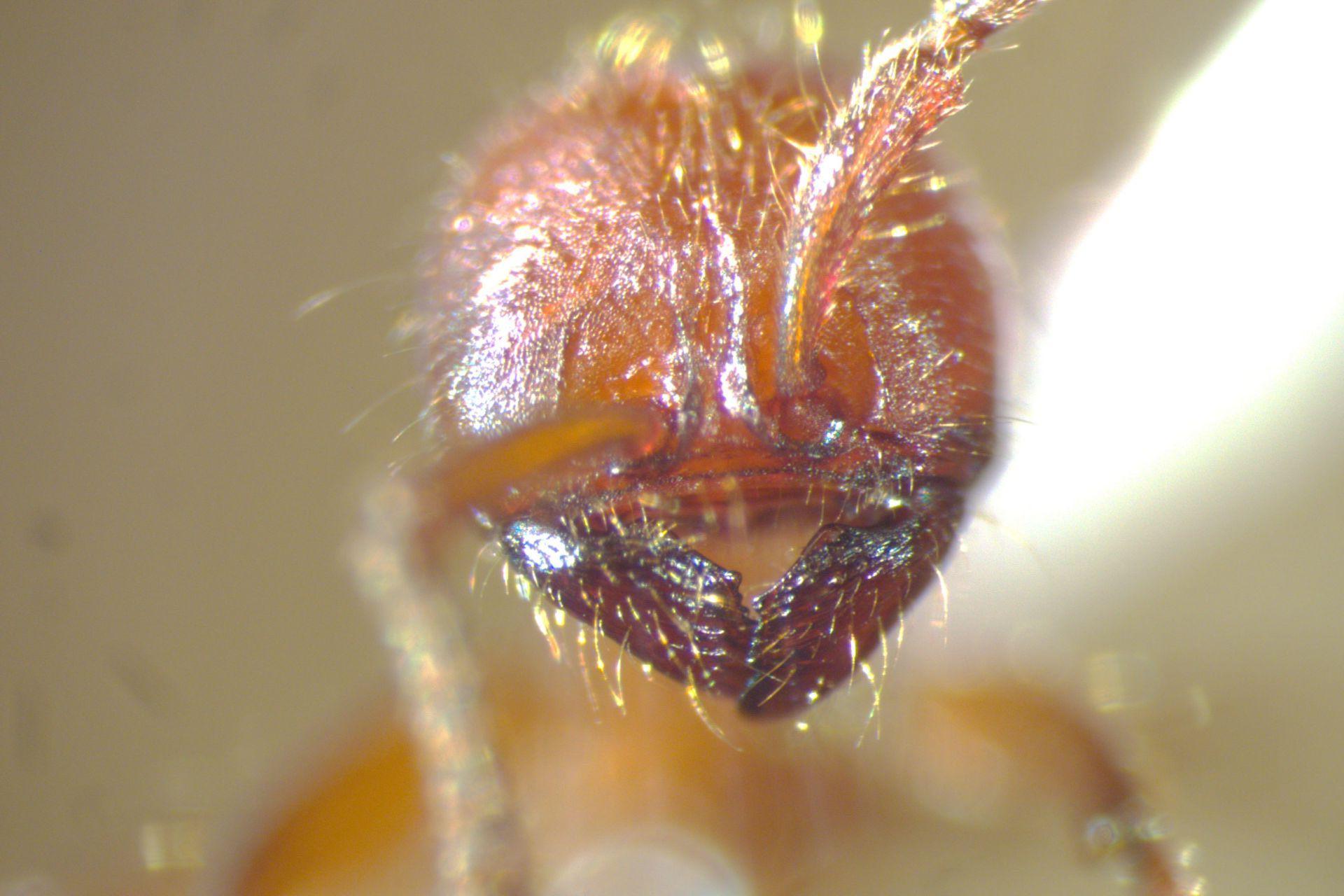
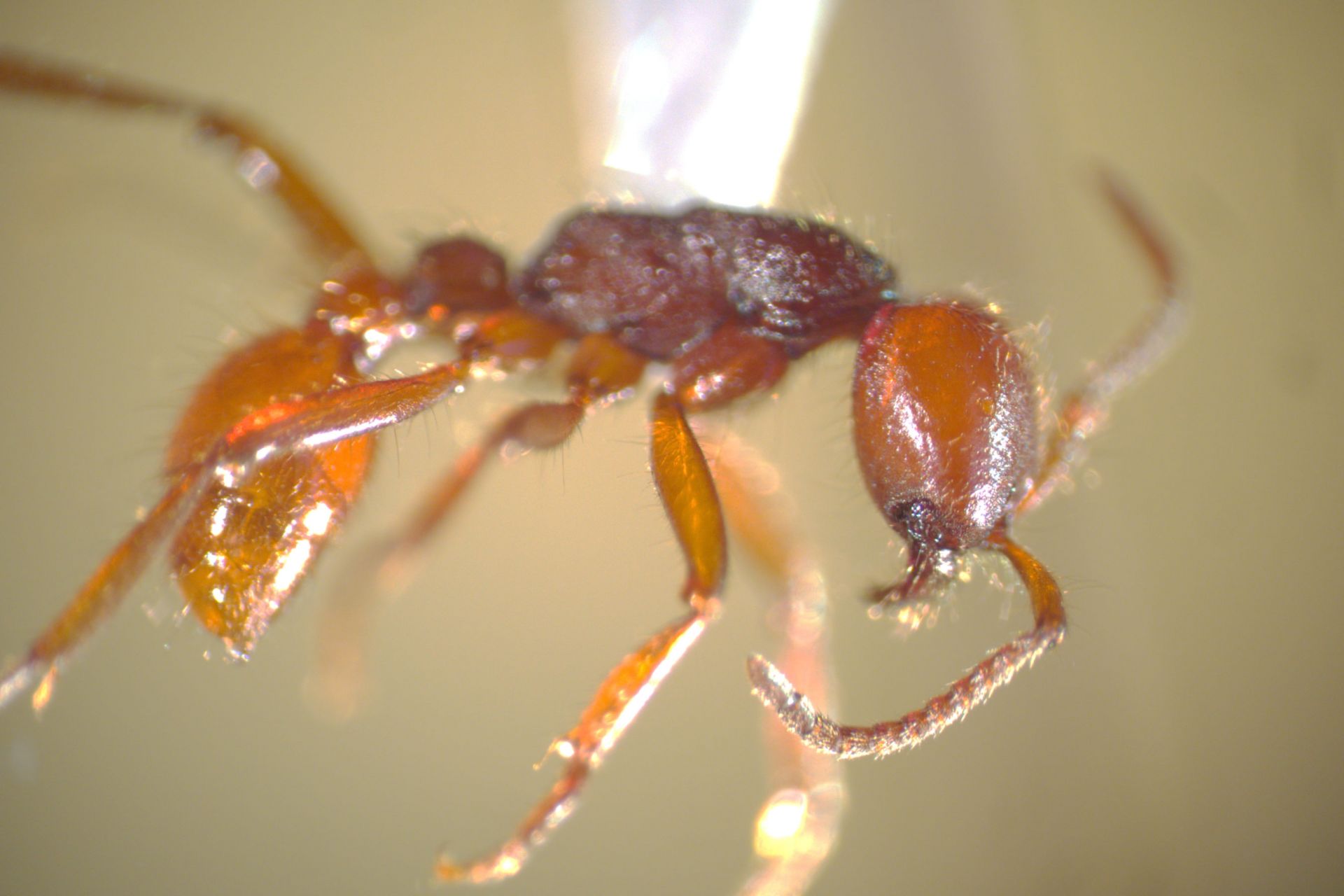
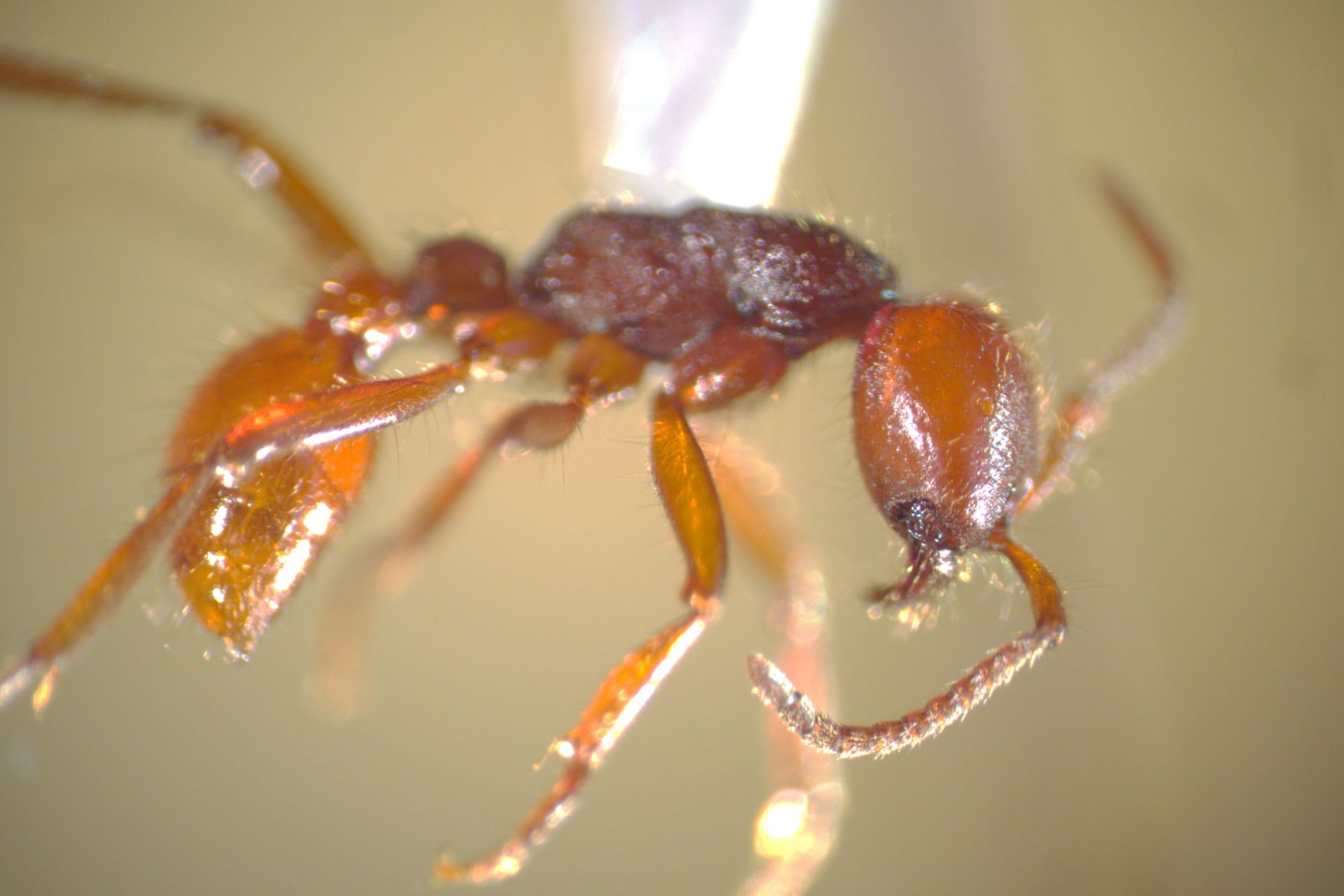
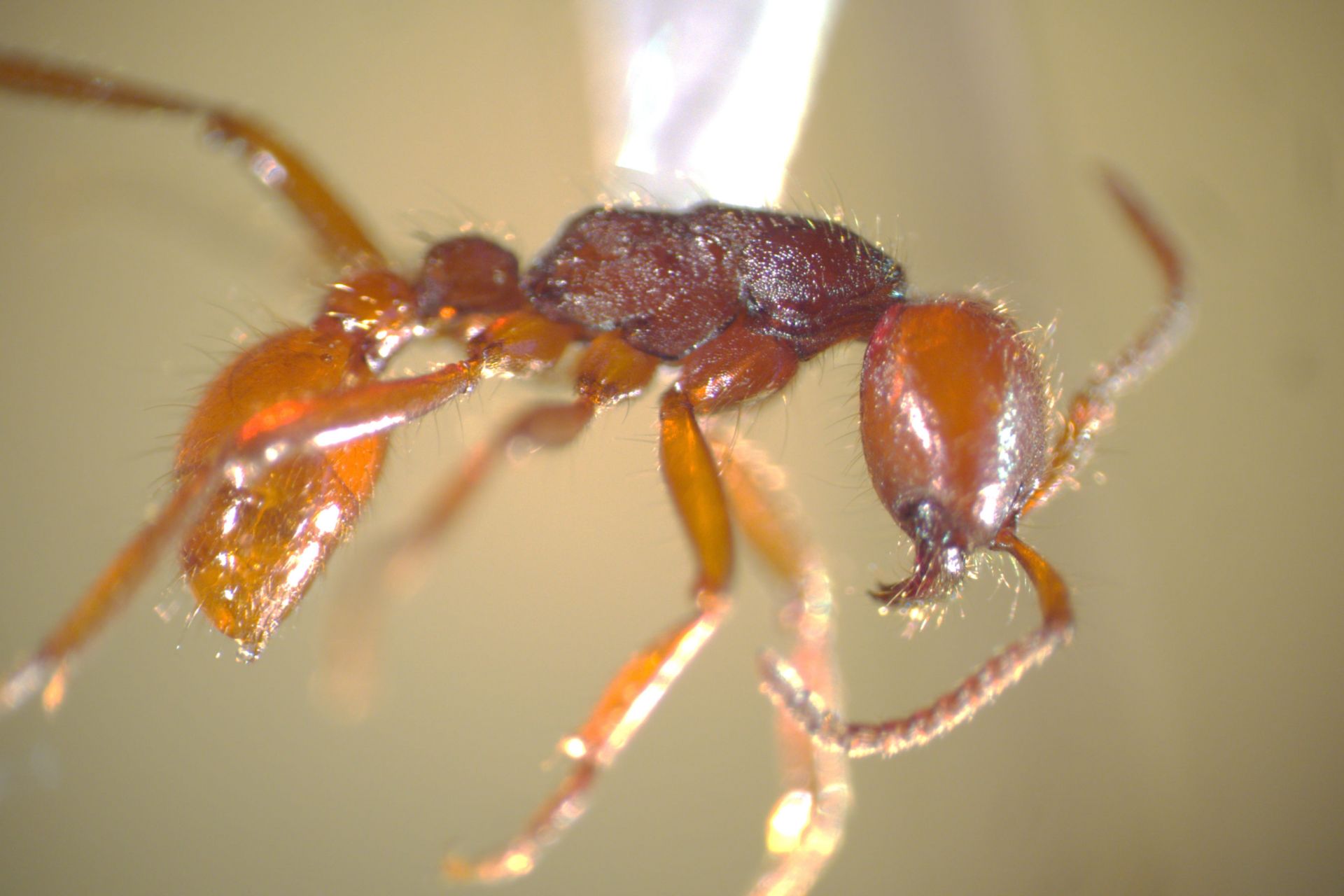
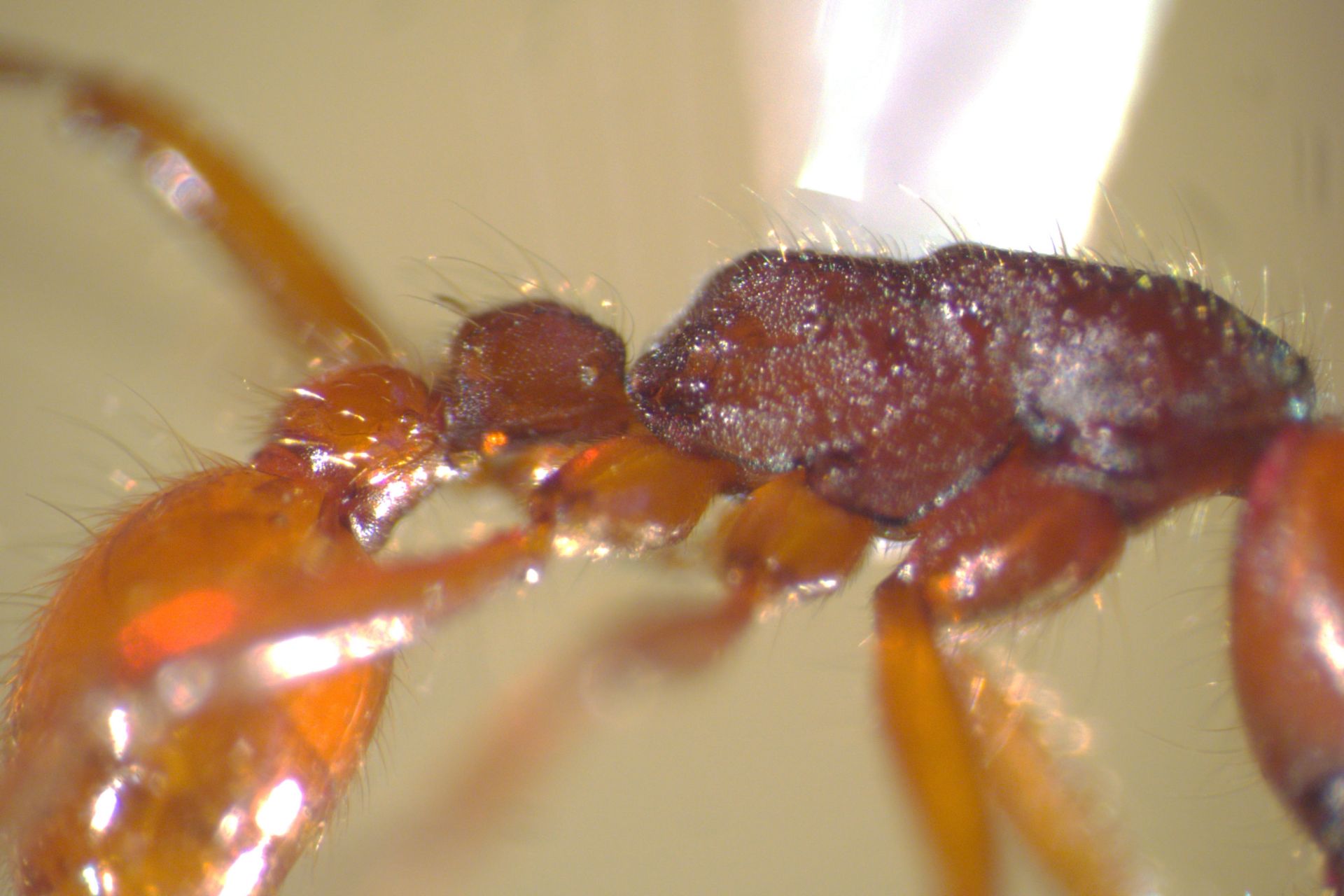
A. Head smooth and shiny between scattered fine piligerous punctures NOT distinctly sculptured and roughened, often appearing granulopunctate.
B. Inner basal margin of mandible straight, with distinct tooth or sharp angle at juncture with masticatory margin.
C. Side of pronotum usually smooth and shiny, and contrasting with the rugulose-punctate sculpture that covers at least part of the mesosoma dorsum. (Though here it is NOT shiny nor smooth)
I would also note the scape is relatively short which is characteristic of Neivamyrmex opacithorax.
Dr. Snelling, what be your verdict?
I found it interesting that there was a specimen of N. nigracens collected in South Dakota: antmaps.org
"God made..... all the creatures that move along the ground according to their kinds (including ants). And God saw that it was good. Genesis 1:25 NIV version
Keeping:
Formica cf. pallidefulva, cf. incerta, cf. argentea
Formica cf. aserva, cf. subintegra
Myrmica sp.
Lasius neoniger, brevicornis
0 members, 1 guests, 0 anonymous users